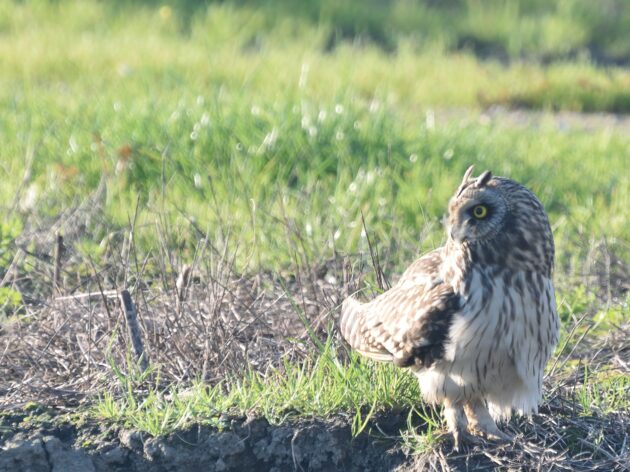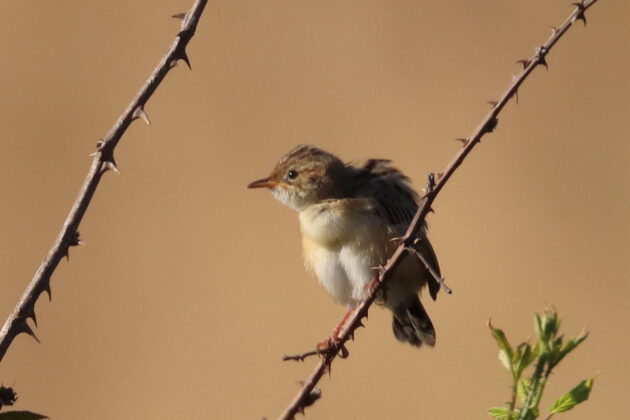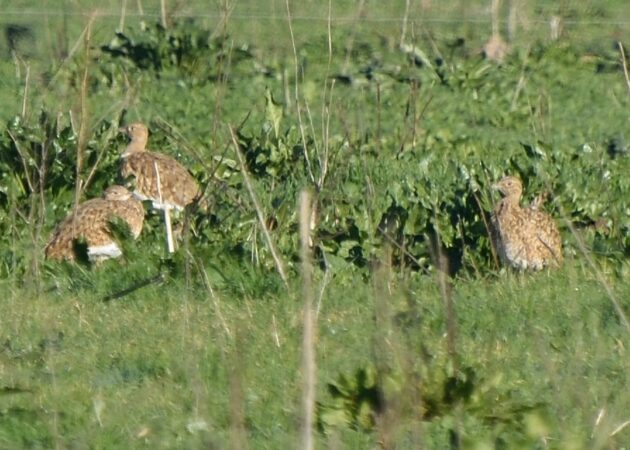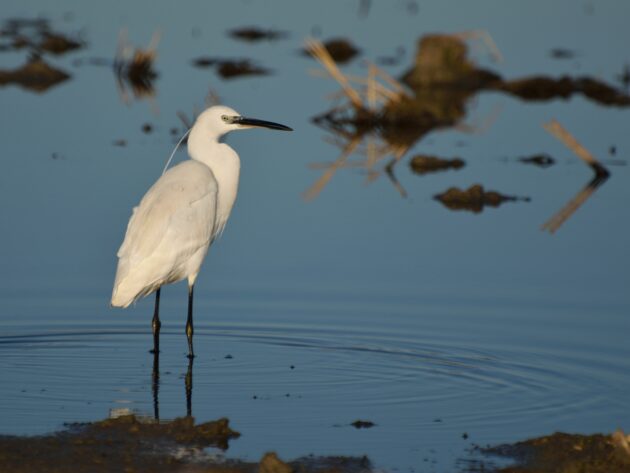The Tagus estuary (Estuário do Tejo) is a very important stop-over on the East Atlantic Flyway. The birding delights of the estuary are a 30-minute drive from the Lisbon international airport. So close, you would think there’s nothing one can do to improve the location of this fantastic birding spot. However, the Portuguese government thinks otherwise and intends to put the international airport on top of the birding – indeed much closer and yet, not an improvement.
The whole estuary is world class with pasture for fighting bulls, rice fields, mudflats, cork oak forests, salt pans and open water. The Lezírias de Vila Franca de Xira (often and erroneously named Ponta de Erva after the most southerly tip) are an extensively farmed area in the north of the estuary. To get there, drive from the airport north on the A1 motorway and take the exit 3 towards Elvas-Evora-Vila Franca de Xira. Cross the bridge and immediately turn right at the sign “observação de aves“. Along the 7 km to Porto Alto there are many entrances but only the first one does not require a keycard. Gate opening times are aligned with the opening times of the EVOA – Espaço de Visitação e Observação de Aves. And don’t worry, I will write about EVOA in Spring.
Most people go to Portugal in July or August to enjoy the three things Portugal is famous for: sun, sand and seafood. Birders are different – in case you didn’t know yet – and birders should avoid these very same months as the plague. Generally speaking, the best months in Portugal are April and September/October but the Lezírias are good year-round. I like to close the year with a visit as birds are like English pensioners in Benidorm – they flock in winter.
The Lezírias provide both quality and quantity. It is the Cristiano Ronaldo of birding spots – lots of goals and good to look at (I’m told). For quality, consider visiting the area called 38 Moios, next to EVOA. It is the Portuguese answer to the Patagonia Picnic Table. There’s an impressive list of vagrants that have been seen there. However, for me it’s the sheer quantity of birds that impresses and continues drawing me to the Lezírias. Huge flocks of Glossy Ibis literally darken the sky. A rice field can have thousands of Black-tailed Godwit, just imagine going through these numbers looking for those Bar-tailed Godwits and Long-billed Dowitchers hiding amongst them. And yes, I realize I have lost my non-birding, non-nerdy readers at this point…
Like the aforementioned English pensioners many songbirds fly south, and Portugal may be far enough south to go. Bluethroats, Cetti’s and Chiffchaff can be found in the brush alongside the canals and the estuary. The Skylarks and Northern Wheatears in the barren fields attract all four European species of harrier (but no Montagu’s for Christmas, sorry). Merlin and Short-Eared Owl are almost a “dead cert” in winter. Almost.

The only guaranteed sighting would be the Zitting Cisticola.

Large groups of Little Bustard are not uncommon in winter. I have seen them every year for the last decade or so.

And after some intense birding it’s lunchtime already. There are three things that are great about Portugal: wine, coffee and the food. Leave the area through the gate again and turn right towards Porto Alto. The Casa das Queijadas offers queijadas – cottage cheese pasties. They have many different varieties, and I selflessly tasted/tested a dozen different varieties. The unsponsored suffering I must endure for this blog… Those pastries are amazing, but if you are a bit peckish: at the Casa they serve a good lunch too. For the fanatics that want to go back to birding asap: grab a “bifana” or “prego no pão” to go.
You can also turn left at the gate, go to Vila Franca de Xira and enjoy one of the many restaurants near the river. If the place is jam-packed, it will be good. Obviously, you will be spending high quality lunch time and birding may drop on your list of priorities for the day. If you feel guilty about that, scan the river for ducks and geese and check out the muddy margins.

Source link
Facebook
Pinterest
Twitter
LinkedIn

